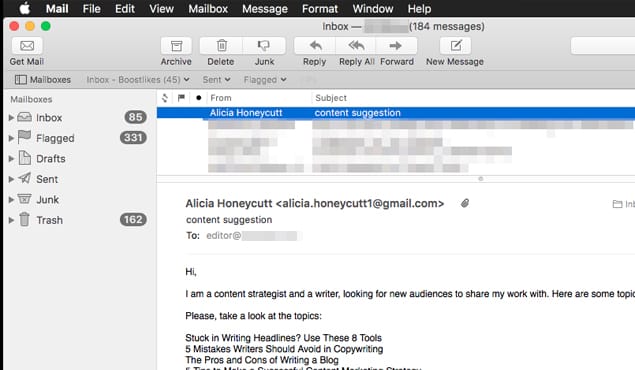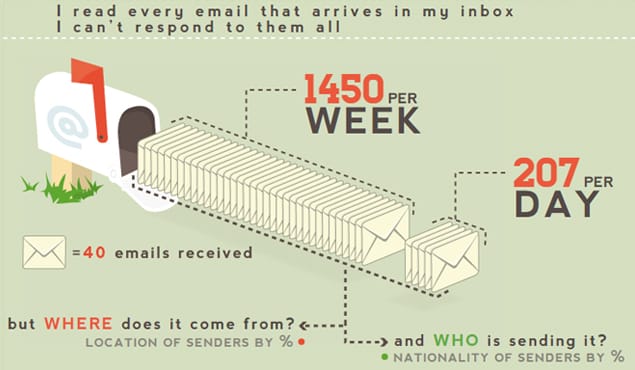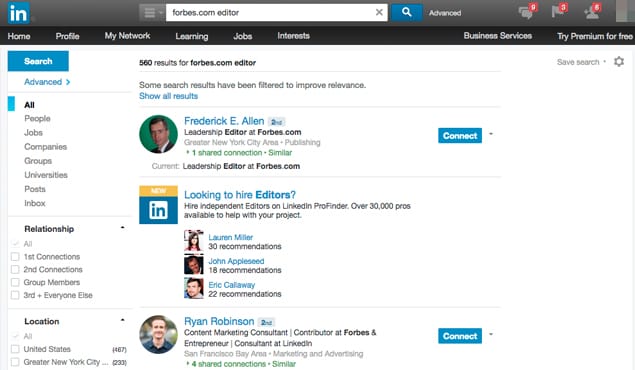Rejection is an ugly word, one that we tend to shy away from in society. Nobody likes to get rejected, whether it’s from the super cool AV club (yeah, I said it), the girl you’ve had a crush on since puberty, or a college you’re pining for.
Common sense tells us that while rejection does indeed suck, it’s actually the road to something greater. As Robert F. Kennedy once said, “Only those who dare to fail greatly can ever achieve greatly.” I believe this to be true — it is actually the feelings of failure, and the rejection that usually precedes it, that allows us to look hard at what we’re doing and move forward.
This mentality is applicable to life as a whole — it’s also great fuel for the writers of the world. There is no profession more prone to rejection. Whether it’s fiction, non-fiction, for books or magazines or blogs, the second you decide to write, you decide to get rejected.
Yes, you can publish your own work. You won’t reject yourself (unless you’re really cruel), and that way you can feel the glory of your name in digital print.
After trudging along the blog path in which you publish your own work, you will, at some point, reach the guest blog hurdle. This is the leap you need to make. Guest blogging helps to increase your exposure as an author and expert, it gives you a new user base to interact with, portfolio points, and backlinks to your own site.
It also comes with the hanging fear of rejection.
The Truth
Listen, I’m going to be blunt for your sake. The title of this article should actually read “5 Strategies to Try WHEN Your Guest Blog Pitch Gets Rejected” — because it’s going to be get rejected. Definitely. I basically guarantee it. (That’s a great guarantee because if it fails, you get accepted, and won’t come crying at my digital door.)
This is not because you suck at writing, or you’re a bad blogger, or any of that negative stuff. It’s just odds. You’re going to have to send pitches to tons of blogs, and the chances of you getting rejected, especially in the beginning, are very high. Editors are very busy people, and they receive a lot of emails.
That road just gets steeper, too. Even if you’re uber successful at guest blogging in the beginning with smaller sites, at some point you’ll want to land a guest blog on Forbes or Inc or whatever the behemoth publication is in your niche. At that point you’ll probably get rejected — if you haven’t already.
The Hope
I’m saying that to prepare you, and to tell you it’s not a big deal. The best of us get rejected.
Instead of hanging your head in defeat (don’t ever do that), rejection just means it’s time to try harder, try elsewhere, and double down on your efforts. Even with rejections, most of the time you’re getting responses and connecting with someone, which are necessary and wonderful.
It’s a fine line between rejection and acceptance, one that mostly has to do with timing. If you really are a bad writer, or don’t understand the guest blog world, it can be detrimental. I’m going to assume you have a decent grasp of the guest blog world, because, if not, it will just take time and experience to get there. I can’t provide you either of those things.
I can, however, tell someone who knows what they’re doing five excellent strategies for continuing on in the face of a rejection.
Here are some strategies you can turn to after having a guest post rejected.
1. Ask for Feedback and Modify
Never say never, right? This approach works best if you’ve received a negative, but still slightly favorable response from an editor.
The Positive Rejection
The editor’s rejection email back to you may read:
“Dear John,
Thank you so much for the guest post pitch. Your article concept is interesting and I see you’ve got writing chops. We’ve had a slew of pitches lately with a similar concept (it must be trending), and you’re a bit late to the game. Good luck, and keep in touch.
Editor”
Now, that’s a pretty sweet email, right? Hardly feels like a rejection. It is, of course, but the tone indicates otherwise.
Timing is the biggest issue here. In my book, timing can be worked out.
The example above is really an opportunity to respond because the editor likes your writing and your pitch, which is the most difficult part of the process.
In this case you can ask more specifics about what other people had submitted to get more information. The editor may give you hints.
It would be better, though, if you simply replied with tweaks on your original topic. Take the direction somewhere else, illustrate a unique point, change it so that it resembles the first idea, but is even more unique.
This will show the editor that you really want to publish with them (after all, you could shop it elsewhere), and are willing to brainstorm for a working relationship. Even if this doesn’t give you an accepted guest blog (it totally might), it shows the editor you’re the real deal.
The Neutral Rejection
If the editor comes back to you with a courteous, but otherwise vacant rejection there’s still something you can do. The rejection might read:
“Dear John,
Thank you for submitting the guest blog pitch. It’s not going to work for us right now, but if you have any other ideas feel free to drop us a line.
Editor”
While this one is friendly, it’s not exactly gushing. It also doesn’t tell you anything about why you were rejected. Sure, sending other ideas is a good future project, but you likely worked hard at that pitch (which is why it was well-received), and it deserves another whack.
In this case respond to the editor and ask what, specifically, didn’t work for them. You can frame this request for information in the context of future pitches — as in, “I’ll definitely pitch in the future, and would love to know what about this pitch didn’t work for you so I can write more to your publication. Was it timing, style, or something else?”
This shows dedication while also probing into the reason you got rejected. What an editor might respond with is a massive guessing game, so I won’t dig into specific examples.
Know that whatever they do say, you have the option of re-writing your article based upon their feedback. If you decide to do that, just email the new article in the old email chain, give a brief description of what’s different, and ask if they will reconsider.
Don’t be so bold as to command them to read the new draft. Let them know they can read the new draft if they want, and thank them for the feedback.
The Negative Rejection
If your rejection was extremely brisk or cold, you’ll need to think hard about why. Assuming the editor doesn’t tell you why they are being rude, and assuming you’ve done everything required for their publication, feel free to ask what was wrong, and then, if the tone changes, submit a new article.
If the tone never changes, do you really want to work with that person?
2. Re-read Their Rules and Requirements
This step is a bit of a gimme in that you should have done your research. However, it remains true that one of the top reasons guest blog pitches get rejected is because they don’t take into account the guidelines of the publication.
Guidelines can include what email address you should reach out to, what they want the Subject Line to be, how much information they want about your article or you, and if they want an outline or the full article.
Publications that have specific rules posted will only publish people who followed those rules to a T. It’s impolite to submit something that doesn’t fall in line. No, it doesn’t count if you start your email with, “I read your guidelines and have stuck to them mostly, but…”
No buts! If the publication put up guidelines for guest posting, they’ve done so because they either get a ton of pitches, or they only publish very particular things, or both.
Not following these guidelines may be a reason for an icy rejection, or no follow-up email at all, which also constitutes a rejection.
Double check every publisher you get a rejection from to see if there were guidelines you missed. Some sites have these in easily reached drop-down menus from the home page, so you really shouldn’t have missed them.
However, some sites are sneaky and like to hide the guidelines to see what sort of digger you are. Not a ditch digger, but an information digger. Have you scoured the publisher to make sure there are no posted guidelines? If not, you could receive that icy rejection.
If this is the case, you can respond. You can say you missed the guidelines, apologize profusely, and tell the editor you will submit again with the guidelines in mind.
Re-submit your pitch in a separate email for distinction’s sake. Be wary, though. Some editors write off people who haven’t done their research.
3. Write a New Article
This strategy can be employed at any time, and works best if you’re really sure the idea you already pitched is dead. If that’s the case, it’s time to get a new pitch or article in the works.
If you had a semi-favorable interaction with an editor of a publisher, make sure to pitch the new article to their site (as long as its appropriate), and reference your previous submission. You want to begin to develop a relationship with these editors, and if they see your name multiple times in a few weeks it will let them know you’re dedicated.
This step does require quite a bit of work, as writing a whole new article or pitch is time consuming, and you gained nothing from the last one.
Unfortunately, this is the plight of the guest blogger.
One note of advice: Don’t let your old pitch or article die alone in the cold.
If it has been rejected by one publication, send it to more. Just because one place doesn’t want it doesn’t mean nobody will, and there’s not some secret network of blog editors who read each other’s emails and laugh at the rejects.
If you do send it out again, make sure it’s tailored to fit that new publication. A blind submission of your article that’s already been rejected to tons of publishers, without alteration, is a sure fire way to get more.
4. Wait It Out
The reality is that some editors won’t like your style, your attitude, or what you bring to the table. If that’s the case, it’s going to be hard to get published at that site. Editors are gatekeepers, and if the gatekeeper is determined to not let you in, it won’t happen.
This does happen at times, so while you continue to guest pitch and (hopefully) publish at other sites, keep that publication you really want on the back-burner.
Check back every six months or so to see if it’s the same editor, if their attitude has changed, or if it’s someone new. Larger websites have new editors every year or two, which means that if your unhappy gate-keeper moves on, you just might have a chance.
5. Last Resort: Email a Different Contact at The Same Site
If you are absolutely hell-bent on getting published at a specific site you can try emailing a different contact at that institution. This only applies to the larger publishers, because the smaller ones will probably just have a single editor to email in the first place.
First, consider why you want to be published there. Goals are great, but goals can also be achieved over time.
Still, if you feel your writing abilities, standing in your niche, and what you have to say is required on that website, but an editor just doesn’t like you, try another avenue.
Email a different department, putting a twist on your article. If you haven an inside connection, like a friend on LinkedIn, you could try that as well.
Get ready for blowback, though, because if an editor finds out you’ve gone behind their back and somehow gotten through, they’re going to be pretty pissed.
Moving On
Rejection is the second step of any writer’s life — right after writing. In the guest blog world this is just how it goes, so get used to it. But, before you get too settled, make sure you stick up for your carefully crafted words and ideas. Make sure to probe to the depths of why a guest blog pitch was rejected in the first place, both to show the editor you mean business, and to learn from your mistakes.
Eventually you’ll get accepted, and then you’ll be on to more rejections. It’s the cycle of a writer’s life.
 ContentPowered.com
ContentPowered.com









